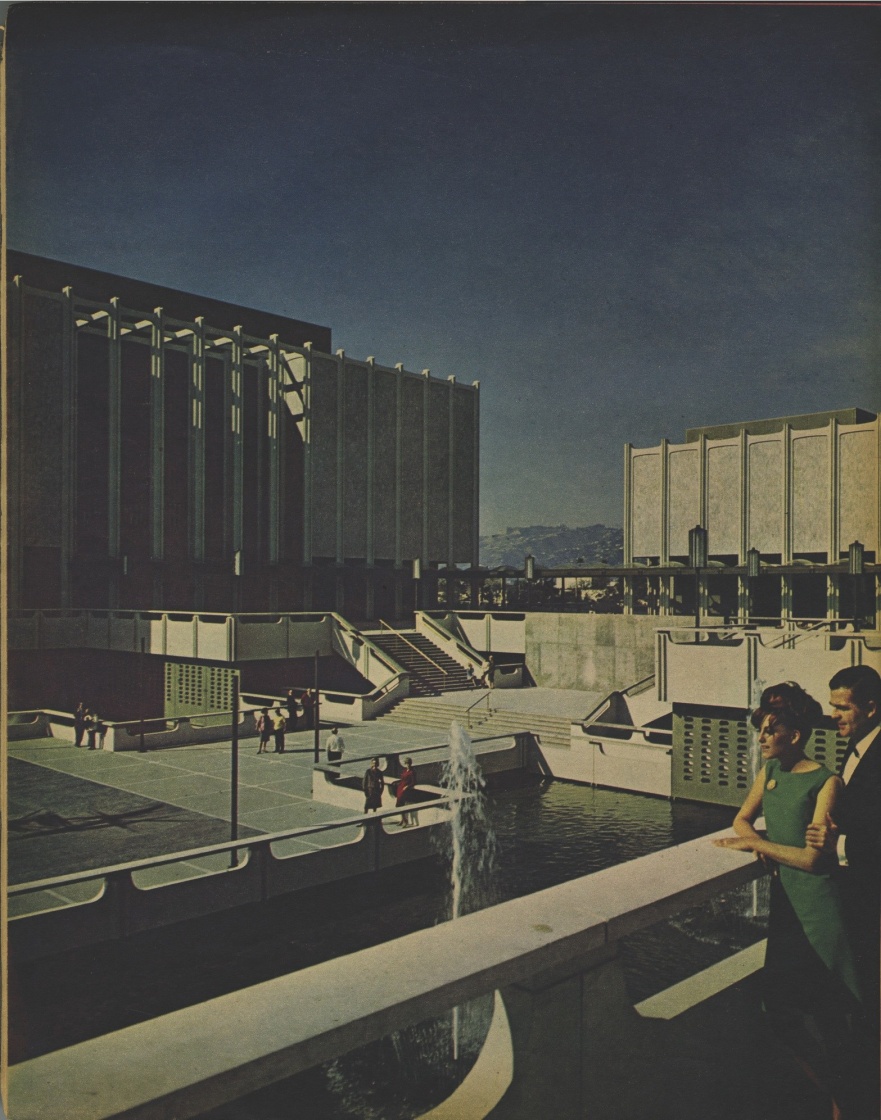The museum of the future: LACMA in 1965

The Los Angeles County Museum of Art opened in March 1965, amid an outpouring of civic pride and a spectacle of fireworks. Designed in a modern classicist style by the local firm William L. Pereira and Associates, the new museum consisted of three pavilions: the Ahmanson Gallery of Art, which housed the permanent collections; the Lytton (now Hammer) Gallery, for temporary exhibitions; and the Leo S. Bing Center, which included the theater, library, and education spaces.
The decision to have multiple structures had been political, with the board adhering to the wishes of the largest donors. These separate structures did, however, allow the architects to take advantage of the region’s year-round benign climate. Their different functions laid out the active public program that defined modern museums, which would make them, in the words of the critic Ada Louise Huxtable, “no longer passive picture galleries.”
The complex appeared to float over biomorphic pools punctuated by fountains. Pereira hoped the setting would elevate the experience, writing, “The visitor feels he has arrived at a different and distinctive place; a place where ordinary daily concerns fade and one has time for reflection and aesthetic enjoyment.” This goal, however, meant that the buildings would be divorced from, not integrated with, the city and landscape. Furthermore, the rapid seepage of black tar into the pools necessitated their infill, becoming a symbol of the flawed planning that would challenge museum administrators for decades.